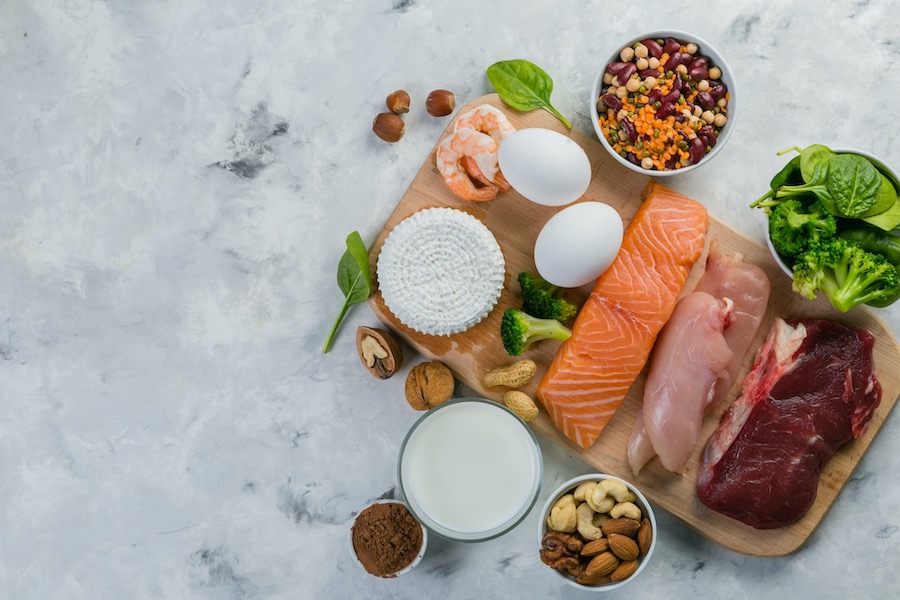Dietitian Blog, MNT Guidelines | Nov 18 2020
Keto acid analogs and protein in chronic kidney disease

Introduction 1,2
Having an understanding of kidney filtration with protein consumption, in regard to chronic kidney disease (CKD) is necessary when providing medical nutrition therapy to this patient population. The body uses protein for growth, repair, muscle mass and chemical production. In healthy individuals, by-products, such as urea, are cleared and eliminated in the urine. With CKD, by-products accumulate and result in impaired kidney function.
Experts note that a reduction in protein load can help alleviate kidney burden, cause a reduction in symptoms and ideally delay the start of dialysis. According to the 2020 National Kidney Foundation Kidney Disease Outcomes Quality Initiatives (KDOQI) Clinical Practice Guideline for Nutrition in CKD, specific recommendations are given to help manage disease progression and highlight the different protein needs in individuals depending on the stage of kidney failure, need for renal replacement therapy and presence of diabetes.
Protein recommendations in chronic kidney disease 2
In comparison to past guidelines, the updated KDOQI nutrition guidelines reflect a slight decrease in protein recommendations. Studies have consistently shown that many individuals, particularly in Western countries, consume above the daily recommended dietary allowance of 0.8 grams protein per kilogram of body weight (g PRO/kg BW/day). With the recommended reduction of protein in earlier phases of CKD, the guidelines state that optimal nutritional status can be achieved by ensuring adequate caloric intake.
Newer guidelines recommend the following protein levels in metabolically stable individuals with CKD stages 3 to 5, not on dialysis and without diabetes:
- Low-protein diet: 0.55 to 0.60 g PRO/kg BW/day
- Very low-protein diet: 0.28 to 0.43 g PRO/kg BW/day with keto acid/amino acid analogs (KAA)
In CKD stages 3 to 5 patients not on dialysis but with diabetes, the recommendation is slightly different:
- 0.6 to 0.8 g PRO/kg BW/day
Type of protein is also addressed as an opinion statement within the guidelines. While there are benefits to both animal and plant-based protein sources, insufficient evidence was found to promote one type over the other.
What are keto acid/amino acid analogs? 2,3
Keto acid analogs are nitrogen-free essential amino acids used in conjunction with a very low-protein diet. A diet lacking in nutrients, particularly calories or essential amino acids, can result in cachexia and a negative nitrogen load. The addition of KAAs can help improve deficiencies and nitrogen balance. While there are different types of KAAs, many commonly contain:
- Four KAAs: isoleucine, leucine, phenylalanine and valine
- Four CKD essential amino acids: tryptophan, threonine, histidine and tyrosine
- One hydroxy acid: methionine
Supplementation should support reaching the protein intake goal of the low-protein diet. In the past, KAAs were used more frequently outside the United States due to availability but can now be purchased online. Recent research has recognized several potential benefits of the very low-protein diet with KAAs including, slowing CKD progression, decreasing uremic toxin presence, reducing electrolyte abnormalities and delaying need to start renal replacement therapy. In individuals supplementing the very low-protein diet with KAAs, clinical supervision and monitoring is recommended.
Role of the registered dietitian nutritionist
Working with your patients to find the appropriate balance of protein is an important part of providing individualized medical nutrition therapy. Depending on the stage of CKD, individuals will have varying protein needs. Patient preference will also influence your recommendations and compliance with nutritional goals. Finding a balance and encouraging your patient to step outside of their comfort zone by including a variety of different protein sources, from plants and animal, can help meet their nutritional needs, combat some of the metabolic abnormalities seen with CKD and hopefully, improve their quality of life.
Dietitians On Demand is a nationwide staffing and recruiting company for registered dietitians, specializing in short-term, temporary and permanent-hire positions in acute care, long term care and food service positions. We’re dedicated to dietitians and helping them enhance their practice and excel in the workplace. Check out our job openings, request your coverage, or visit our store today!
References:
The Mayo Clinic Diet: 7 Dietary Sources of Energy: Available at: http://diet.mayoclinic.org/diet/eat/dietary-sources-of-energy?xid=nl_MayoClinicDiet_20140904. Accessed November 1, 2020.
Ikizler TA, Burrowes JD, Byham-Gray LD, et al. KDOQI Nutrition in CKD Guideline Work Group. KDOQI clinical practice guideline for nutrition in CKD: 2020 update. Am J Kidney Dis. 2020;76(3)(suppl 1):S1-S107.
Koppe L, Cassani de Oliveira M, Fouque D. Ketoacid analogues supplementation in chronic kidney disease and future perspectives. 2019;11(9):2071. doi: 10.3390/nu11092071
Who we are
Dietitians On Demand is the nationwide leader in providing dietitians with jobs they love. If flexibility, competitive pay, a full benefits package, free CPEUs each month and a team dedicated to dietitians sound good to you, apply to our positions today.




